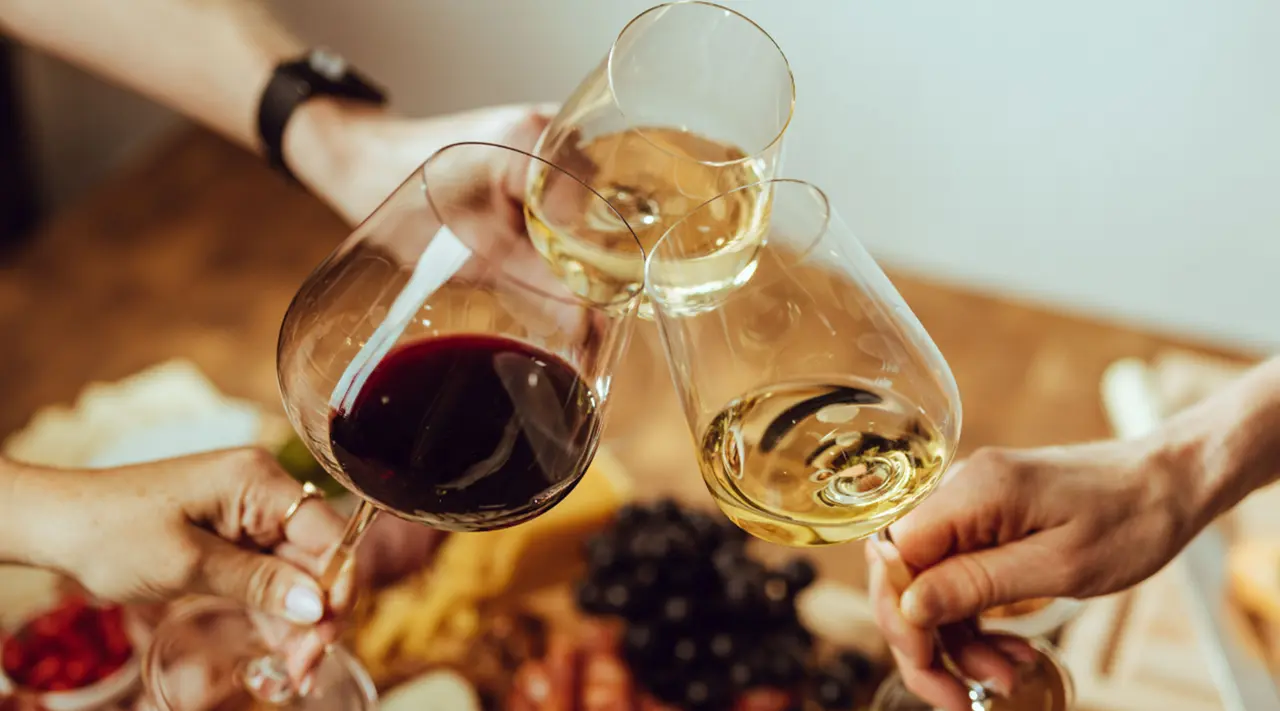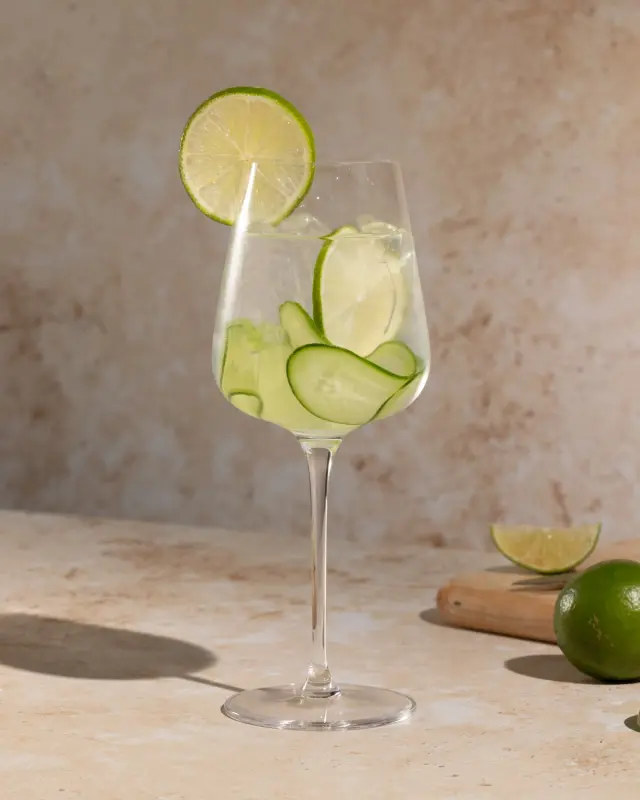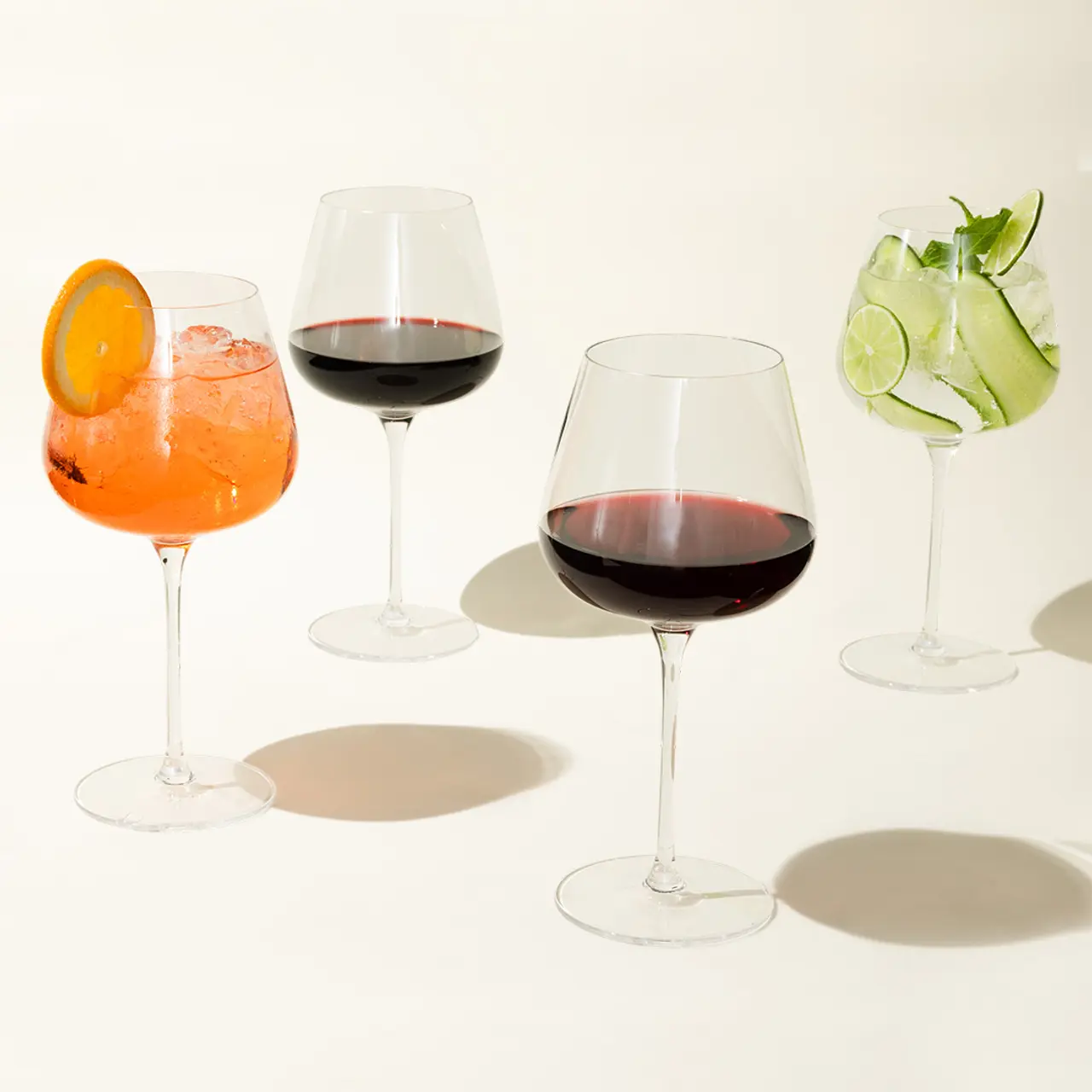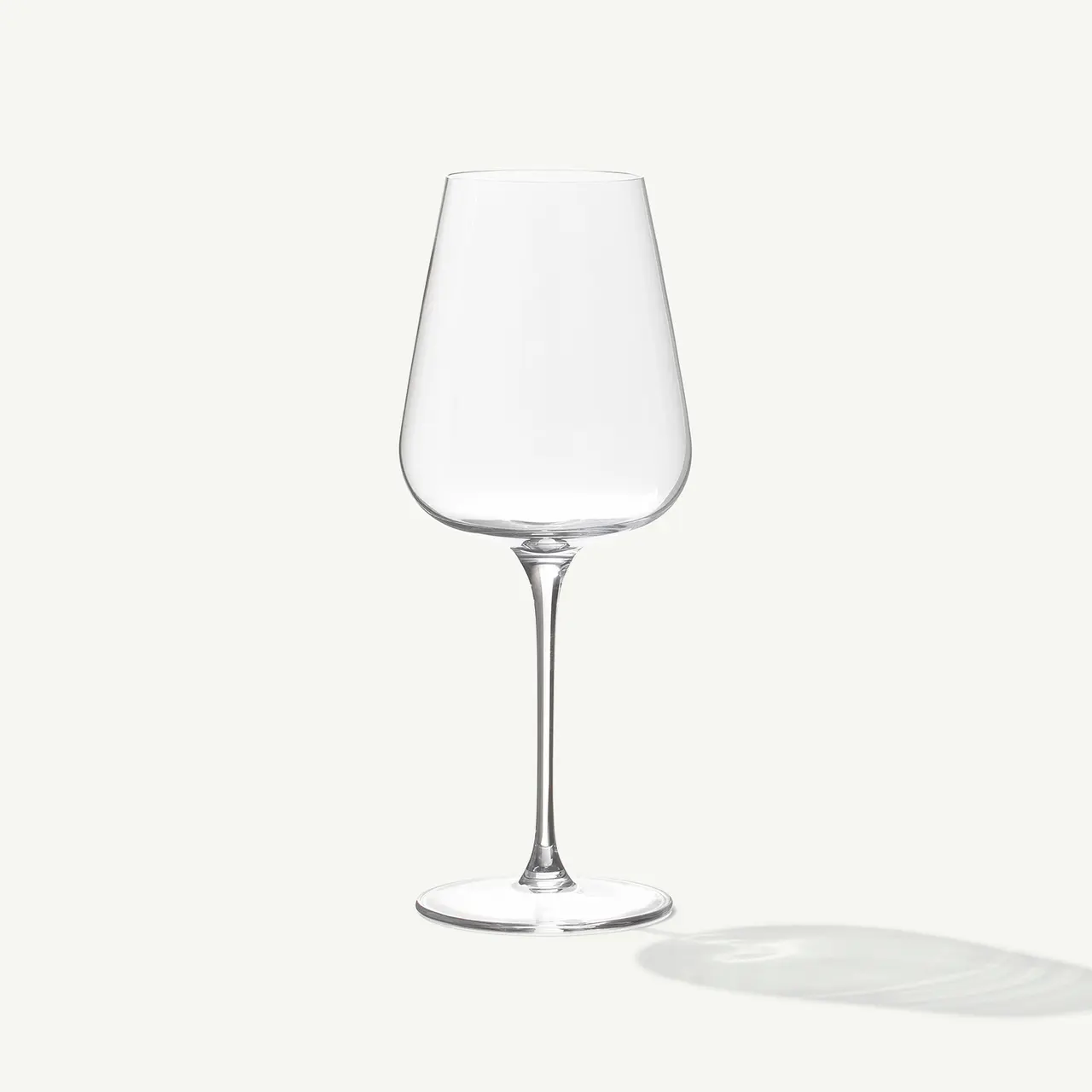Let’s be clear: A really good wine will taste good whether you’re drinking it from a glass, a mason jar, or straight from the bottle. Yet proper stemware—glasses designed for swirling, holding, and sipping different wines—can make wine-drinking into an event. Because wine is so dynamic, releasing different flavors and aromas based on how it’s served, the glass you drink it out of can have a noticeable effect on how it tastes.
Here, you’ll learn about the major wine glass shapes—e.g. chardonnay, Burgundy, Bordeaux—and what actually distinguishes them. Most importantly, what makes a white wine glass different from a red wine glass, and do you really need both? Read on to find out.
The Basics: Anatomy of a Wine Glass

There are four basic components to a wine glass: the bowl, the stem, the base, and the rim (aka the lip). Here’s how they play into the wine-drinking experience.
Bowl
The most obvious difference you’ll notice among different varieties of wine glass is the size and shape of the bowl. A glass designed for Burgundy, for example, might feature a larger bowl, giving the drinker plenty of room to swirl the tannin-rich wine. On the other end of the spectrum, a narrower bowl will better preserve the aromas and temperature of a crisp, light-bodied white wine.
Stem
Beyond making a wine glass look and feel super elegant, the stem actually plays an important role—namely, it keeps the heat of your hand away from the bottom of the bowl. This is especially important when it comes to drinking rosés or white wines, which are typically served chilled. For this reason, a white wine glass often has a longer stem than a red wine glass.
Base
The base of a glass—i.e. the part that rests on the table and supports the stem and bowl—is key for balance and stability. A poorly-constructed base can cause your glass to wobble when you set it down, or even tip—ideally, the base should be at an equal weight to the bowl and act as a counterweight.
Rim
Generally speaking, a high-quality wine glass will have a very thin, smooth rim, allowing the wine to flow seamlessly from the glass into your mouth. This not only makes for a more elegant sip, but it also helps you better detect the flavors and aromas in the wine without the interruption of a bulky lip.
Types of Red Wine Glasses

While a universal red wine glass is more than sufficient for the home drinker, you can also get incredibly niche with your stemware collection. Here are some of the most well-known red wine glass styles.
Bordeaux Glass
Tannin-rich and high in alcohol content, these wines tend to shine in a large glass with a deep, straight-sided bowl that tapers gently toward the rim. Bordeaux glasses are also usually on the taller side to maximize oxygen exposure, which helps soften the tannins and allow some of the alcohol to dissipate. For that reason, it’s often used to also serve cabernet sauvignon or similar, full-bodied reds like cabernet or merlot.
Burgundy Glass
While Burgundy can refer to a variety of wine styles made in the Burgundy—aka Bourgogne—region of east-central France, they’re generally known for their lighter body as well as their complex, fruit-forward aromas. They benefit from a glass with a wider, more rounded bowl and tapered rim for directing those aromas toward the nose. This is a great glass for serving similar light-bodied reds, like pinot noir or Lambrusco.
Types of White Wine Glasses

Because white wines are generally less tannic and have a subtler bouquet than red wines, they’re usually served in a smaller, narrower glass to help concentrate the aromas, minimize oxidation, and preserve temperature.
Chardonnay Glass
Though a chardonnay glass is smaller than a typical red wine glass, it has a slightly larger bowl than other white wine glass styles. This is to emphasize the creamier mouthfeel of full-bodied white wines like chardonnay, and, as such, can be used to serve similar wines like muscat and viognier.
Sauvignon Blanc Glass
Slightly lighter in body than chardonnay, and incredibly aromatic, sauvignon blanc is best served in a glass with a narrow bowl and rim. This helps concentrate the aromas and more effectively guide them towards your nose.
Riesling Glass
With its relatively high sugar content, acidity, and fruit-forward flavor profile, riesling is often served in a smaller, narrow-rimmed glass to avoid overwhelming the palate with sweetness. While you can buy special riesling glasses, a universal white wine glass will work perfectly fine.
Types of Sparkling Wine Glasses

While we often serve sparkling wine in a regular white wine glass—preferably one with a narrow, tapered bowl to preserve the effervescence—we also love a coupe, flute, or tulip-shaped glass to really kick up the celebratory vibes.
Champagne Flute
Champagne flutes are a classic for a reason: With their tall, slender bowl and narrow rim, they showcase the wine’s signature bubbles, as well as prevent them from dissipating too quickly. We love flutes for their timeless elegance, but a white wine glass is actually our (and many professional’s) preference for serving Champagne and other sparkling wines.
Sparkling Wine Tulip
With its tapered shape and narrow, flared rim, tulip glasses help focus the aromas and preserve the bubbles in sparkling wine. We also love drinking beer out of them.
Coupe Glass
These petite, shallow glasses might seem like a trendy alternative to the champagne flute, but coupes have actually been around for centuries—roughly as long as Champagne itself. In addition to champagne and other sparkling wines, coupes are also great for serving small cocktails.
Our Pick: Universal Wine Glasses

With over 400 different styles to choose from, the world of stemware is overwhelmingly diverse, and well worth exploring. For the average wine drinker, however, a good set of universal wine glasses is more than sufficient. Our Glassware Sets—one for red, and one for white—complement any bottle, from a coveted Grand Cru to an everyday table wine.
Ready to Shop?
In the right glass, a great wine can taste even better. From the tactile experience of holding a well-designed glass to the way the wine flows over the rim, good stemware is an incredibly worthwhile investment—especially if you regularly drink wine at home. And while we’ll never judge you for drinking wine out of a mason jar or water glass (or just straight out of the bottle), it may be worth investing in some quality stemware. With its two-piece construction and proprietary design, our wine glasses are elegant yet strong enough to hold up for years.
















































